From “terrorist” to “freedom fighter”
When Guy Fawkes and his fellow Catholic co-conspirers failed at their attempt to blow up the Protestant Houses of Parliament in 1605, they were executed for high treason. Guy Fawkes was indeed taking part in a resistance movement, but his influence and the perception of his actions and aspirations have distinctively changed since the 17th century. The Plotters’ means were violent, and their aim was to destabilise the country enough to provoke a governmental shift.
Guy Fawkes has since had the pleasure of appearing in all kinds of media, from literature to political protests (bear in mind, not for the same cause as he once stood for). He has become known for his reincarnation ‘V’ in the dystopian, futuristic adaption of the Gunpowder events in the graphic novel and film ‘V for Vendetta’ (Murfin, 2011).
The mask V wears has become a symbol for the righteous, the underdog, the ones trying to overthrow unfair governments and corporations. It is an interesting development to have derived from fictional literature. Even if the character V did not specifically share the Plotters objectives, they certainly shared methods, which can to some extent be interpreted as; if enough people agree with the cause, violent attacks to disrupt the structure is not terrorism.
Thus Guy Fawkes turned into a “freedom fighter” across four centuries. However indirect the link between the mask and the man may be, this shows how historic events can be twisted or merely differently interpreted with the usage of mass, social and popular media and how perceptions change in relation to what is the current norm. With this analogy lets look briefly at media’s role in defining what terrorism is and to raise awareness of how language usage can create bias.
Contemporary terrorism is diffuse and complex to define as it generally depends on whether the general population share grievances with the victim(s) or the perpetrator(s). But for argument’s sake and because of its general representation, terrorism is often neutrally explained as any religiously or politically extremist force that uses violence to enforce an agenda. The term is mainly employed when the attackers’ political ideology is not compatible to the majority’s of the country in which the attack has occurred. Like Guy.
The media’s role in portraying “terrorists” – does the media create them?
It can be argued that there are two main issues regarding how terrorism is treated on the news and in popular mediums; 1) it is often exaggerated and made more dramatic than it needs to be and thus traumatising the audience beyond necessity. And 2) by doing this it does exactly what the “terrorists” want. They receive not only recognition but also direct benefits for operational efficiency, propaganda purposes, recruitment, raising awareness and funds. It would be strategically counterproductive to commit terror acts in countries where the press is not a free entity, as well as over reporting by the press is a strategic mistake.
In many cases the media does restrain from using biased terms such as ‘terrorism’, but the absence of the word does not depreciate the actions. According to L. John Martin, an amount of circa 9 incidents of terror is reported worldwide each day. This still provides the public attention that the perpetrators desire, and need, to infiltrate fear into people’s daily life. (Martin, n.d.)
It is of course important for the media to report on these issues, for informative and security reasons, as is their duty – but it often crosses over into ‘entertainment’ for their own profit. Reporting on it is often in the media’s own interest, aiding in the pursuit of higher ratings. The treatment of terror incidents are intriguing to people in several ways; the danger, disturbing footage and a lack of security which often leads to a need to stay informed, thus providing higher viewer ratings (Martin, n.d.). The more attention something has been given in the media the more important it seems, easily taking attention away from other issues that might require it as well, or even more.
The audience is also presented with a single story, perhaps even a selective one, from which they are to draw their own conclusions. For example, the grievances (those exact grievances that might portray a “terrorist” as a “freedom fighter” by other social norms) of the people committing the terror are often left out completely or distorted (Bilgen, 2012). Whether this is an intentional move on reporters’ side or not is difficult to say and would surely vary. The issues occur in different places and different forms, as seen below by an American scholar living in China:
“However, these days many in the U.S. and Europe are quite sympathetic to these groups in Western China. If the government here refers to them as terrorists, then I suspect that many Western media folks think of them as freedom fighters.” Stan Abrams, China HearSay, 2012 (find on Twitter, Facebook and Blog here)
and a professor of mass communication, media globalisation and Middle East,
“[…] at a time when Arab official discourse is pressing for peace with Israel as a strategic option and opposing the Palestinian suicide bombings against Israeli civilians, some Arab satellite channels insist, most of the time, on dubbing the Palestinian suicidal operations “martyr” operations (El Tounsy).” Mohammed el-Nawawy, Global Media Journal, 2005
This post does not deny the existence of terrorism because it is rarely universally applied to a group or a deed, nor is it attempting to diminish the substance and significance of terrorism, it is merely aiming to highlight the issues of bias and terrorist portrayal in certain media. Whether it was changing cultural patterns, a fictional novel or simply the age of time that resulted in Guy Fawkes becoming the face of Wall Street demonstrators is not certain, but his public image has certainly changed. If the majority of the media that one is exposed to, both news and entertainment, delivers one approach to an idea it is likely to become the truth if people are not aware of both the media’s and their own bias.
__________________________________________________________________________________________
Sources:
Abrams S, 2012, The media’s “terrorism” bias, China HearSay (January 6)
http://www.chinahearsay.com/the-medias-terrorism-bias/
Bilgen A, 2012, Terrorism and Media: A dangerous symbiosis, e-International relations (July 22)
http://www.e-ir.info/2012/07/22/terrorism-and-the-media-a-dangerous-symbiosis/
el-Nawawy M, n.d., Terrorist or Freedom fighter: The Arab media coverage of “Terrorism” or “So-called terrorism”, Global Media Journal
http://lass.purduecal.edu/cca/gmj/fa04/gmj-fa04-elnawawy.htm
Martin L. J, n.d., The Media’s role in International Terrorism, University of Maryland
http://pegasus.cc.ucf.edu/~surette/mediasrole.html
Murfin P, 2011, Guy Fawkes – The man behind the mask (November 5)
http://patrickmurfin.blogspot.co.uk/2011/11/guy-fawkesthe-man-behind-mask.html
Pries-Shimshi Y, 2005, Creating a citizenry prepared for terrorism: Education, media and public awareness, International Institute for Counter-Terrorism
http://www.ict.org.il/Articles/tabid/66/Articlsid/184/currentpage/23/Default.aspx






